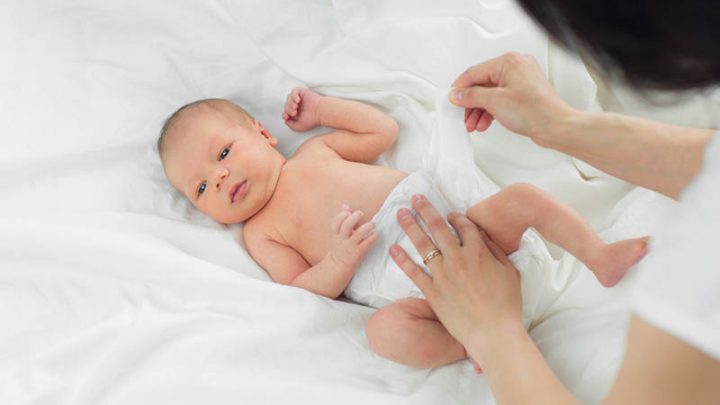A scene of a diaper blowout is the stuff of nightmares for every parent, and something you wouldn’t wish for anyone to have to witness, let alone clean up.
The worst diaper blowouts are the ones that can only be described as a poop explosion, when the poop goes all over the baby’s back and leaks down the baby’s legs, leading to not only a poopy diaper but extremely soiled clothes and a messy sheet, too.
It’s something that is avoidable, but will likely happen to your little one once or twice simply due to them growing out of their diaper size.
It can happen because the baby’s diaper is either too big or too small, so it simply no longer fits and starts getting loose seams where the poop can leak out depending on how your child is positioned.
No matter how absorbent a diaper is, it can only hold so much before it reaches critical mass and explodes all over the place, resulting in you having to clean up the resulting mess afterwards.
Sometimes, you might not get to your child in time because both you and your partner are busy, or the child doesn’t seem all that bothered until all their baby poop comes pouring out of the diaper.
Although the leakage can be cleaned up easily enough, and is only a slight inconvenience for you in the form of a few extra loads of laundry and a couple of minutes of clean up, it’s rather worse for your child.
When the baby’s clothes get soaked it can be quite uncomfortable for him, and if poop gets all over the baby’s skin it’s very likely to irritate it and leave a rash behind, especially with newborns or kids that have sensitive skin.
Luckily it’s preventable, and I’m here to teach you exactly how to deal with diaper blowout and what to keep on hand to help you resolve the issue.
10 Helpful Tips For Dealing With Diaper Blowout
1. Putting the diaper on properly

The mistake new parents make most often which leads to these blowouts usually happens on the changing table during diapering.
This is because the main reason for diaper blowouts is a diaper that has been put on incorrectly, and this can be pretty common if the parents lack the required knowledge.
In order to prevent diaper leakage, you have to make sure that the diaper fits your child properly and is correctly positioned.
First of all, you must make sure that the back of the diaper is lifted so the edge is roughly level with your little one’s belly button.
Next, fasten it along the straps if it’s a disposable diaper.
Once that’s done, pull the diaper ruffles out around the leg cuffs to seal that potential exit point and ensure a snug, but comfortable fit.
Finally, you must seal up the tabs on the side.
Once finished, the diaper should fit tightly around the baby’s bottom, waist and legs while still leaving a bit of breathing room around the waist area so he doesn’t feel too constrained.
You don’t want to cut his blood flow off, after all.
2. Make sure you have the appropriate diaper size
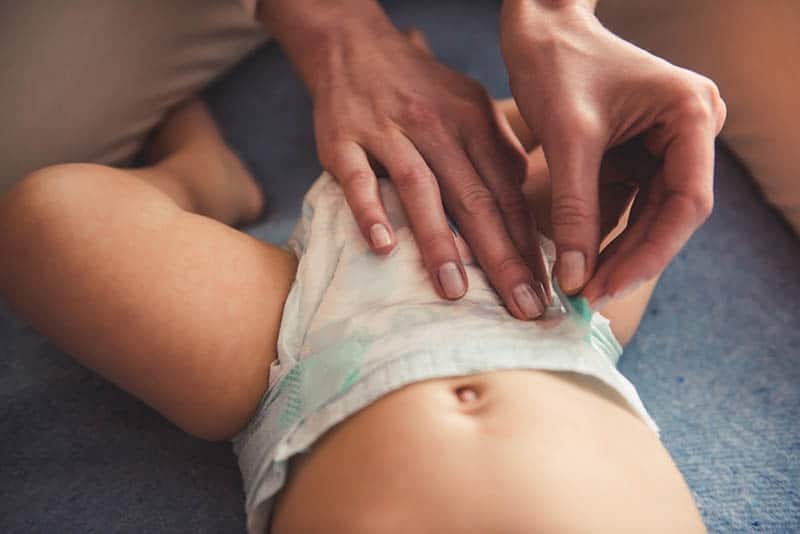
As I mentioned before, having the wrong diaper size is one of the main reasons why a diaper blowout occurs.
It’s something that first time parents will likely have the displeasure of dealing with once the accident happens, but they will be sure to learn from the experience.
There’s actually a reason why diaper sizes have a bit of overlap between them.
One is because of their elasticity, which gives them a wide range of baby waists to work with, and the other is so you can easily go a size up when you need to, making the transition to the next size a bit easier.
If blowouts are occurring frequently at your child’s current size, you might want to consider sizing up if your child fits the appropriate weight category for the next size.
On the other hand, you don’t want to be too hasty with your diaper changes either, because you might be dealing with a diaper that’s too large for your child.
A diaper that’s too large can end up being too loose at the seams no matter how tightly you fasten it, which ends up leaking its contents down the baby’s legs leading to a disgusting, but necessary, change of clothes for the child.
If you’re having trouble figuring out when it’s time to swap to the next size, you might want to try Huggies disposable diapers as they feature a size-up indicator to help parents know when it’s time to go bigger.
3. Altering your child’s diet

Another common reason behind frequent baby blowouts is poor diet.
Something your child is eating, or in case you’re breastfeeding, something that you’re eating, might be what’s causing the unease in his guts that leads to frequent diaper blowout.
Should this be the case, consider making an appointment with your child’s pediatrician so he can analyze both your diets and diagnose the potential culprit, so you can adjust accordingly.
If you’re an avid coffee drinker it might be time to ease up a bit until you finish breastfeeding your child.
The same goes for any spicy foods or soft drinks as well, so be sure to keep those in mind.
Common culprits are a food allergy or lactose intolerance, so it’s always worth going to a pediatrician just to make sure it’s neither of those.
4. Figure out exactly what went wrong
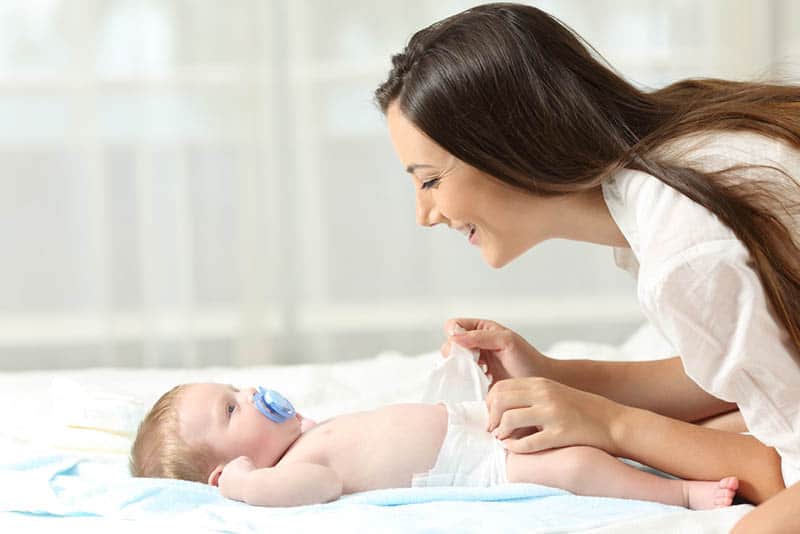
It’s better to work out exactly what went wrong before taking any other steps to resolve the issue, once you’ve cleaned up the mess, of course.
Was the problem incorrect diaper size?
Was it an allergy or food intolerance caused by your baby’s diet?
Maybe the diaper got snagged on something and was torn off.
The diaper itself might have been defective, with a faulty, missing, or worn down elastic band a common culprit in this instance.
It’s possible your current diaper brand isn’t as effective at containing mess as you previously thought, so it might be a good time to swap brands.
It could also have been a one off encounter due to a freak set of circumstances.
Anything is possible really, so it’s important that you get to the bottom of things and keep it from happening again, which will only waste more of your precious time (and stain remover).
5. Swap diaper brands
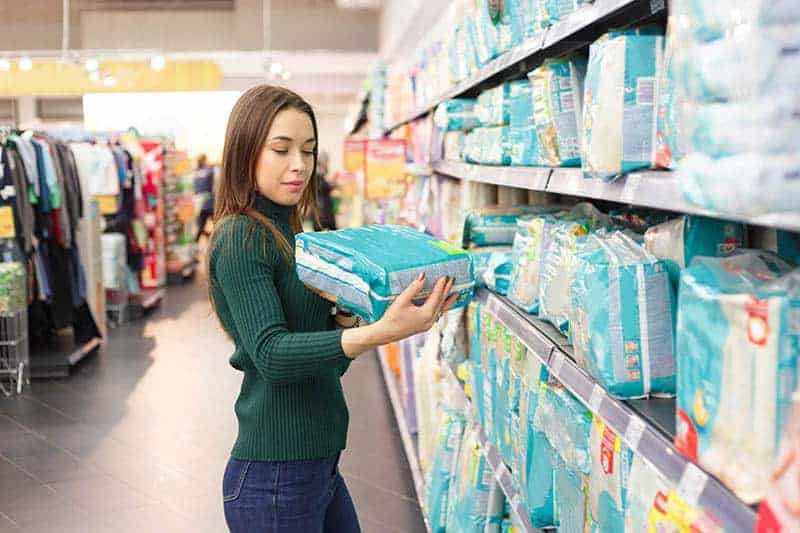
If none of the previous methods helped, you might want to check the quality of the diaper itself.
This is usually a problem when you’re a mamma on a budget, and you have to use off-brand diapers that are of lower quality than some of the more popular diaper brands.
This often leads to leaky diapers that aren’t nearly as absorbent as the top shelf ones.
Should this be the case, it might be time to shift your budget around a bit and invest into quality brands like Pampers, Luvs and Huggies to ensure that it isn’t the diapers fault blowouts happen.
You can easily get these on Amazon, so you don’t have to worry about whether your local store has them in stock.
RELATED: Pampers VS Luvs VS Huggies: Which One Is The Best Diaper?
6. Try using a cloth diaper
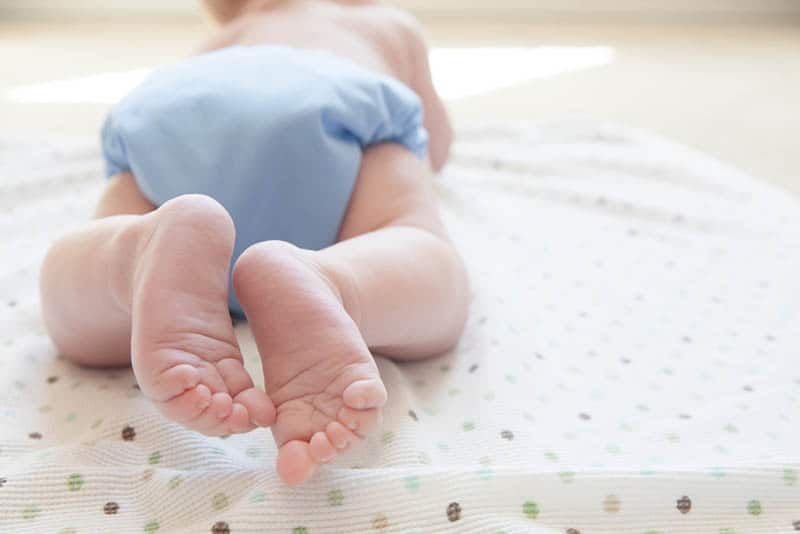
If you’re still having issues with disposable diapers like Pampers or Huggies not being absorbent enough due to frequent and heavy loads causing diaper blowout, you may want to give cloth diapers a try.
They’re a bit more absorbent, and are reusable and budget friendly, too.
They’re a great alternative if you can’t afford to always buy the most popular diaper brands, as they’re designed to contain bigger loads.
You’ll also need to take into account the extra time it takes to wash the extra loads of reusable cloth diapers, as well as the increased chances of diaper rash.
Another option is to use them as a cloth diaper cover over disposable diapers, which provides another layer of protection against leaks so you don’t have to clean up anything other than your baby’s behind, and potentially the cloth diaper itself should it come to that.
7. Make sure to check and change the diapers often
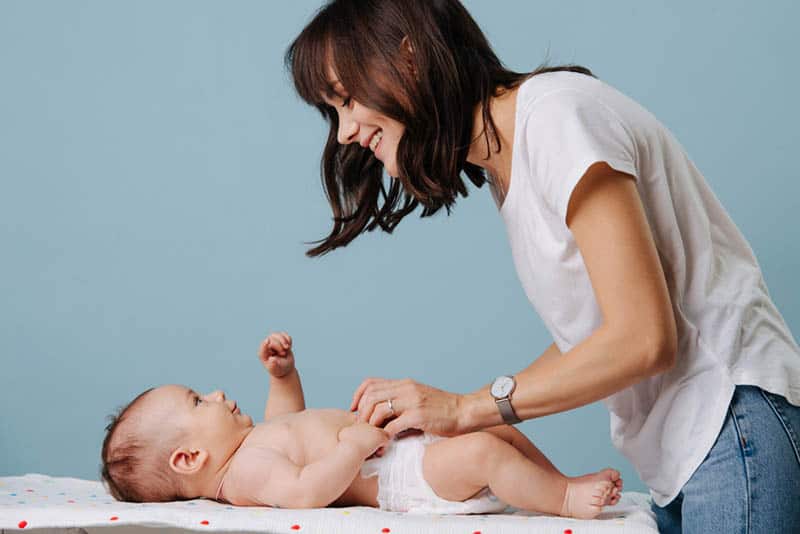
If you aren’t using diapers with a wetness indicator, make sure to check if the diaper is full every now and again, because if you wait until your baby gets fussy and starts crying you’ll be dealing with a lot more diaper blowout than you first anticipated.
Many new parents often wonder how many diapers they need, and underestimate the amount.
Most parents generally think that babies poop around the same as adults, 1-3 times a day, when in reality it’s nearly 4 times as much as that.
You’ll be going through anywhere from 8 to 12 diapers a day for newborns, which is slowly reduced to around five over the years, so those diapers will get full faster than you think.
So, be sure to get into the habit of looking your kids over every once in a while. and make sure to carry a diaper bag full of the necessary items to change your little one’s diaper wherever you go, as you never know when disaster might strike.
All I can say is, pray that it never happens in a slim baby car seat, because those things are a nightmare to clean if poop leaks onto them. You’ll never be able to get rid of the darn smell.
8. Resorting to a blowout blocker diaper extension
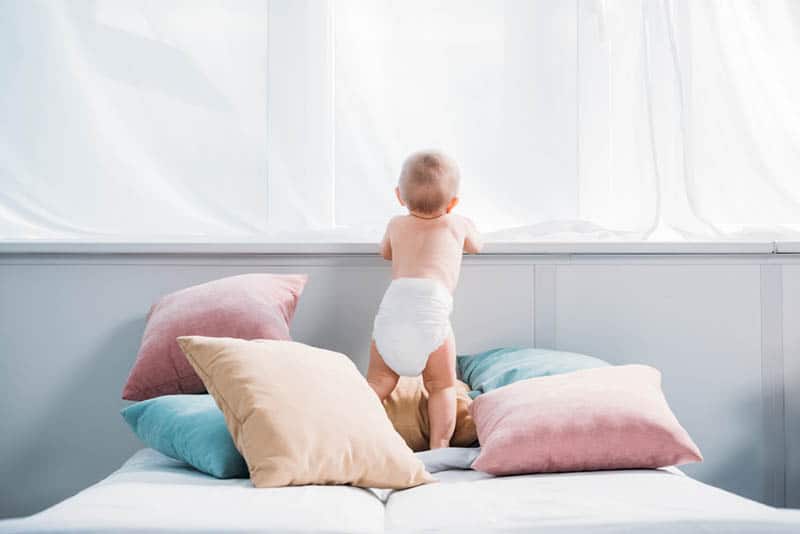
If all else fails, there are so-called diaper extenders, which help block blowout from rising up above the back of the diaper and onto the baby’s back.
This provides an extra layer of protection if this is the sort of diaper blowout issue ruining your relaxation time.
The only downside is that they might look a bit silly, but they can easily be hidden behind a onesie or something similar, without compromising your little one’s mobility or comfort.
9. Carry what you need to clean things up in a diaper bag at all times
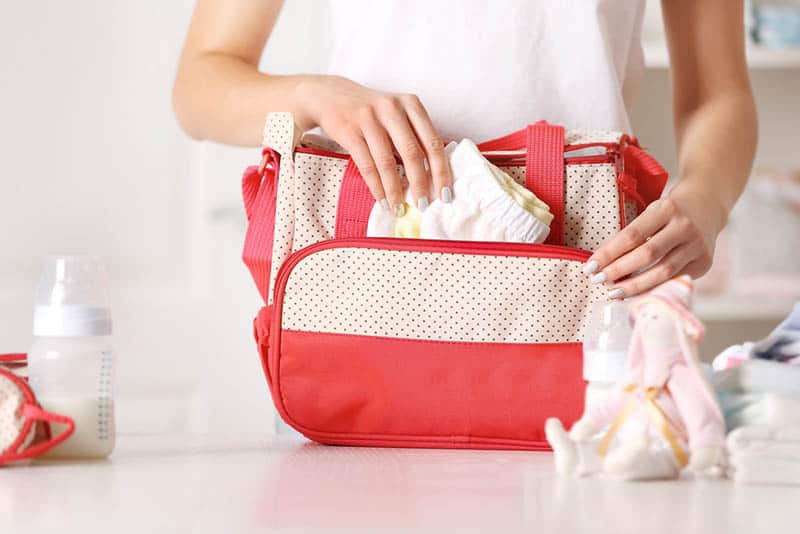
Diaper accidents can happen anytime and anywhere, whether in the comfort of your own home or in the middle of a park.
The important thing is that you always have what you need to help deal with the situation, the essentials include:
• A change of clothes for your child (and for you in case it leaks on your clothes while you’re holding the child or cleaning up the mess).
• A few spare diapers.
• A resealable, plastic bag, preferably a ziploc so you can store the soiled clothes separately from the rest of the items inside the bag.
• A full container of baby wipes to clean everything off.
• Talcum powder.
If you have a child with sensitive skin, you might also need some skin balm or cream to help deal with, or prevent, potential diaper rash.
The items mentioned above are just the most commonly used ones.
10. Knowing how to deal with the blowout itself
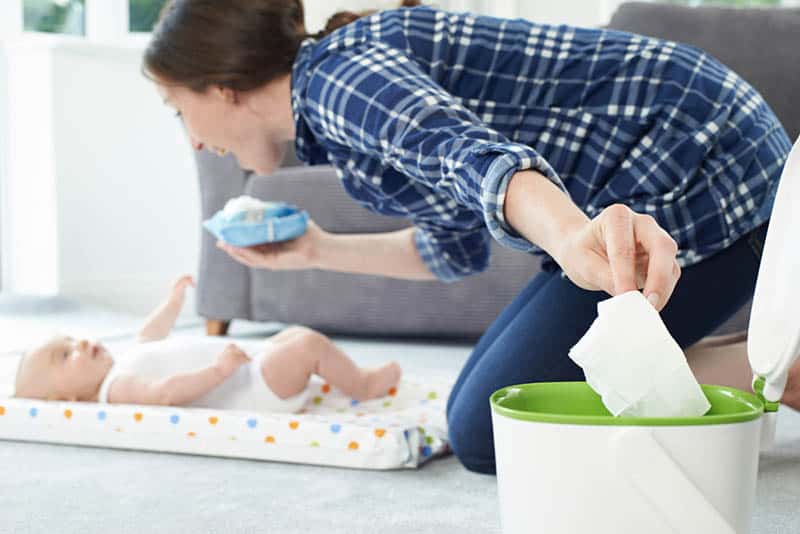
Preventing diaper blowout by changing things around is all well and good, but you also need to know how to properly clean it up when it inevitably happens, because no amount of prep work can stop it from happening completely.
It’s easy when you’re at home, at least as far as the baby is concerned.
All you have to do is remove the soiled clothes and poopy diaper from your child and dispose as necessary (more on that a bit later), after which you’ll need to give the baby a bath depending on how rough the situation is.
Some people recommend using a showerhead, but I personally believe it’s best to grit your teeth and do it with your hands and warm water.
This way you’ll apply a gentler touch and get through it much quicker.
Once it’s all done, dry him off as carefully as you would after a regular bath by dabbing the wet area dry with a washcloth or a soft towel, before applying some baby powder or soothing skin balm and putting the new diaper on as described in the first tip.
If you’re outside, you’ll need to use some of the items from the diaper bag that I mentioned earlier.
You’d ideally want to get some privacy for your child and access to water, which is usually found in a public bathroom.
Once there, you need to take the poopy clothes off and store them in one of the resealable plastic bags, then put them away in the tote until you can get home to clean them up properly.
Afterwards, use chemical-free baby wipes to thoroughly clean your child, and dispose of them accordingly before putting a new diaper and fresh clothes on him.
Once that’s done, I recommend heading back home as soon as possible so you can clean the clothes before the stain dries out and becomes even harder to remove.
Speaking of which, I recommend using something to scrape off any excess poop from the clothes before applying stain remover and soaking in warm water, then chucking them in the washing machine to clean them up properly.
Repeat this step as necessary in case the stain is particularly stubborn
The same goes for any messy crib sheets or other fabric that might also have been affected by the poop tragedy.
As far as hard surfaces go, you’ll need to use disinfectant wipes so none of the poop bacteria stays on any surfaces and gets you or your baby sick for no reason.
In case of messy carpets, treat them like you would any other stain and use carpet cleaner.
In Conclusion
Dealing with baby diaper blowout can be a real mess, but it’s a lot easier to deal with when you’re prepared for it.
It’s always important to figure out why the blowout occurred so you can take the appropriate steps to prevent it from happening again in the future.
The key, more often than not, is to just change your child’s diaper frequently and make sure it is on properly.
The other cases are a lot rarer, but you might end up running into them every now and again regardless.
I hope you’ve gleaned a little bit of extra insight into how to deal with this parental nightmare more effectively.
Until next time, mammas.
Like this post? Please share or pin it for later. You can also stay in the loop and follow us on Facebook, Instagram or Pinterest.
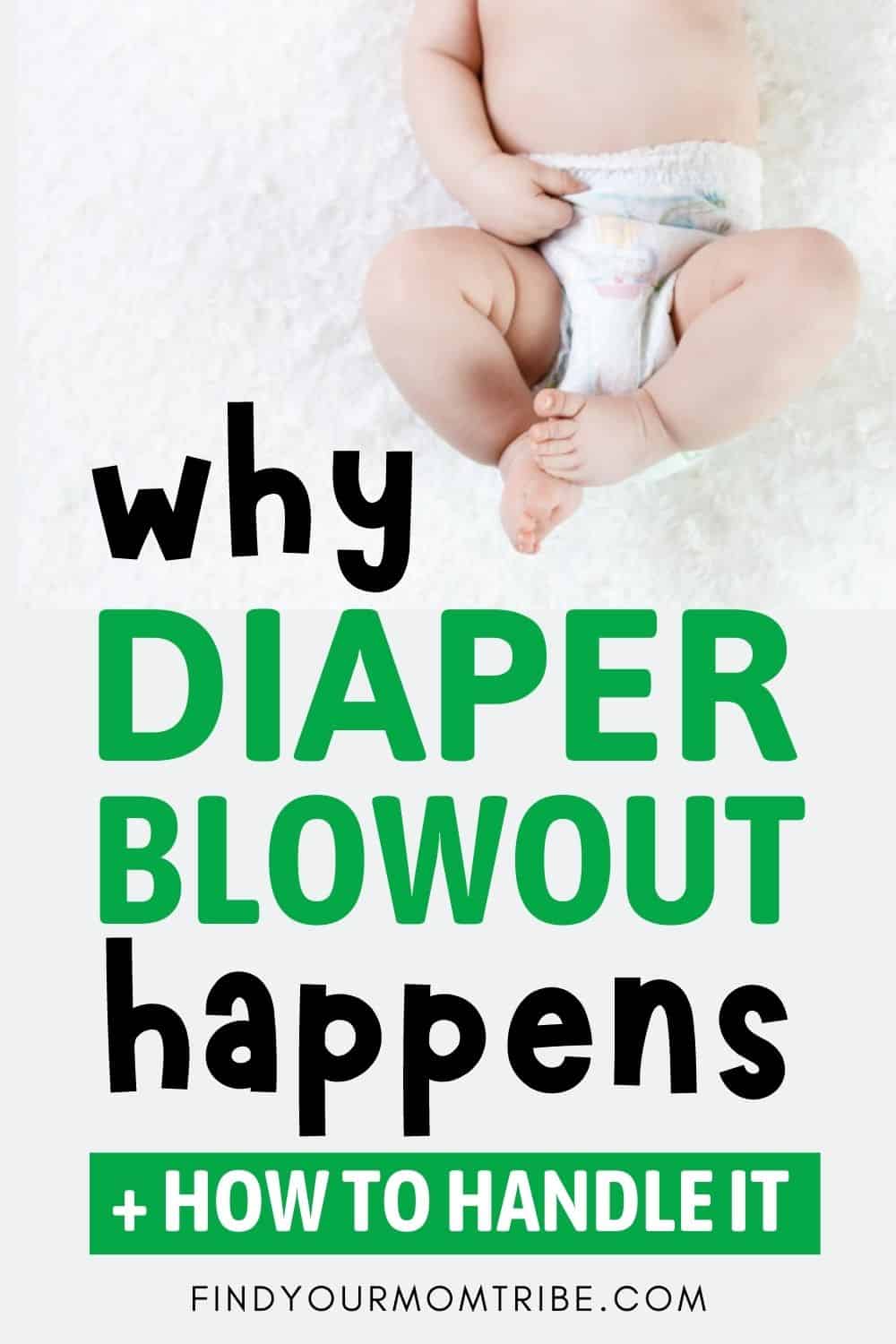
We love honesty! Find Your Mom Tribe is an Amazon Associate and we earn from qualifying purchases through affiliate links at no extra cost to you. Please see our full Amazon Affiliate disclosure for more information.

